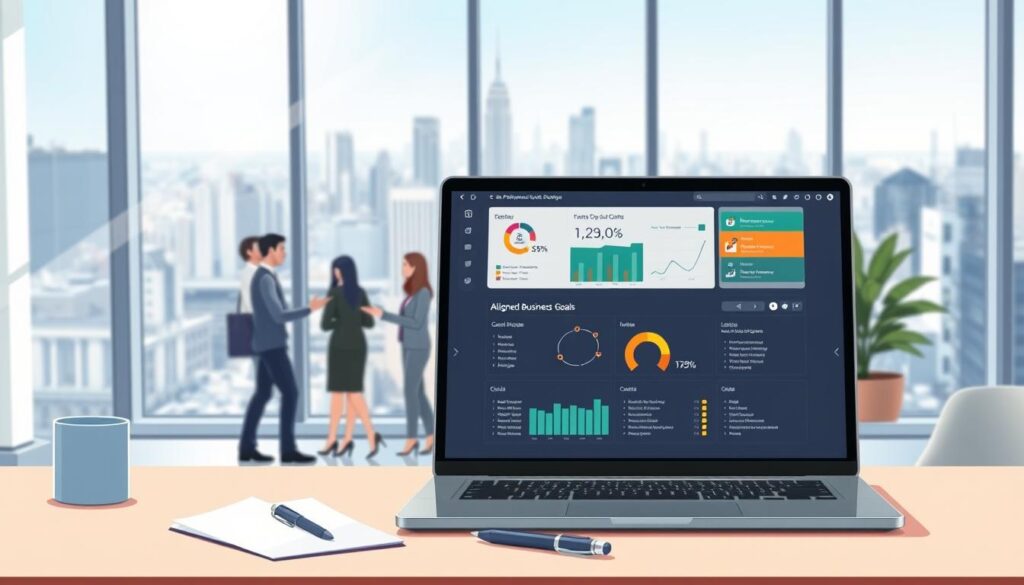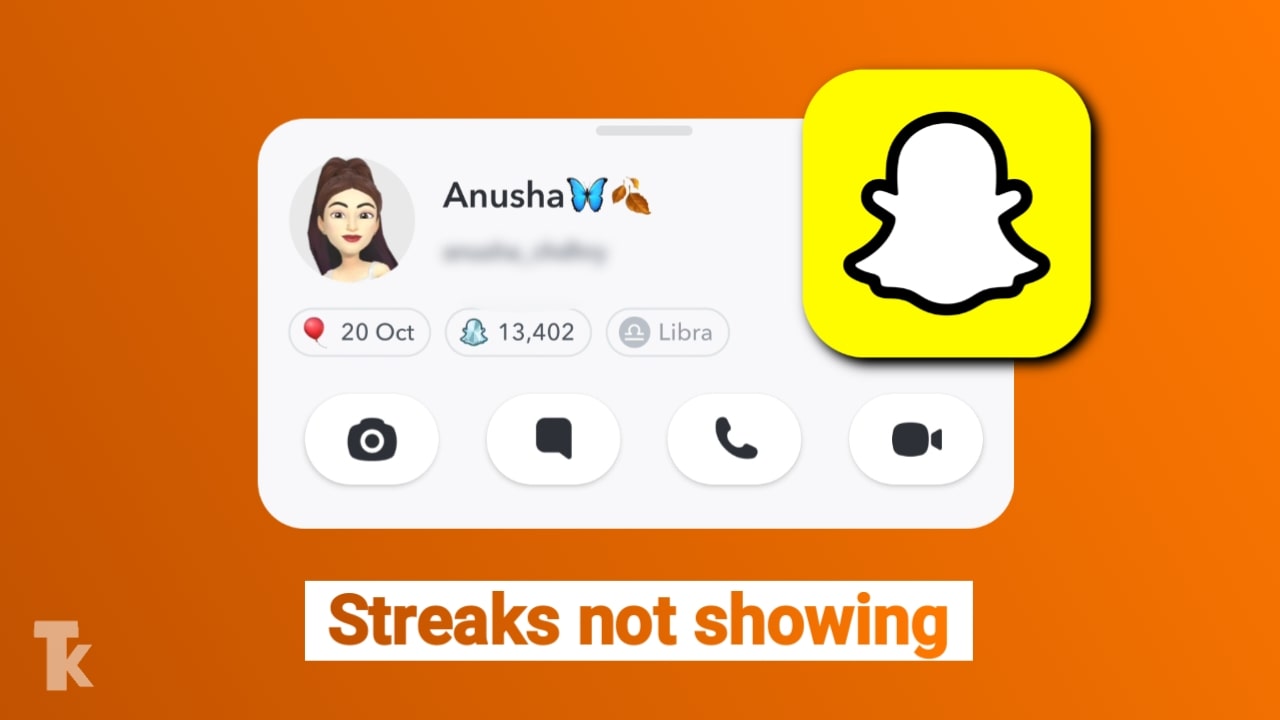Executive Summary: To dominate Influencer Marketing Strategy 2025, brands must pivot from vanity metrics to tangible business outcomes. This playbook covers essential tactics including leveraging micro-influencer ROI for authentic engagement and utilizing whitelisting ads to scale reach. We detail how to navigate FTC disclosure guidelines, secure UGC usage rights via a solid influencer contract template, and implement robust campaign attribution models. Consult the latest influencer rate card 2025 benchmarks to budget effectively and drive growth.
Surprising fact: the creator-driven industry is set to top $22.3 billion this year, and 85% of marketers say it delivers real value.
That scale matters. If you run a small business, you can use these methods to boost brand awareness and sales without wasting ad spend.
In this guide, we give you a clear roadmap to plan, launch, and measure a campaign that ties to your goals and bottom-line results — not just vanity metrics.
You’ll learn why creator content often outperforms brand posts, how to match the right creators to your audience and which platforms work best for reach and engagement.
We also share actionable tools: briefs, budget tips from nano to mega partners, legal must-dos, and tracking methods like UTMs and promo codes so you can prove results.
Key Takeaways
- Creator-driven efforts can outperform many traditional media channels.
- Match the right partner to the right audience and platform for better engagement.
- Use clear briefs, fair compensation, and simple tracking to measure success.
- Budget smartly across partner sizes to scale campaigns efficiently.
- Protect your business with basic compliance while keeping content authentic.
What Influencer Marketing Is and Why It Works Today
Creator content fits into feeds rather than interrupts them. That simple difference makes recommendations feel like tips from friends. People are 92% more likely to trust peers than ads, and nearly half of consumers say they’ve bought after seeing a creator post.
Authenticity and social proof matter. Likes, comments, and shares act as signals that a product is worth trying. When creators match your audience, their relatability turns awareness into clicks and purchases.
The U.S. market is driving big growth. Estimates put the creator-driven market at about $22.3B in 2024, with forecasts near $24B by year-end. Smaller creators often yield higher engagement—nano accounts average 4.39%—so conversations can outperform raw reach.
Why brands invest
- It borrows trust at scale while remaining trackable with UTMs and promo codes.
- Creator posts blend into daily life, making products feel useful rather than pushed.
- High engagement from niche creators often delivers better conversions than broad media buys.
| Metric | Typical Effect | Why it matters |
|---|---|---|
| Trust | +92% preference vs. ads | Leads to faster purchase decisions |
| Engagement | Nano ~4.39% | Drives conversations and conversions |
| Market Size | $22.3B–$24B (2024) | Signals sustained investment and impact |
Align Your Strategy With Business Goals and KPIs

Start by tying every campaign to one or two clear business goals so you can measure what matters.
Define the goal in plain terms: awareness, traffic, engagement, conversions, or user‑generated content (UGC). Pick only one or two. This keeps your team focused and budget efficient.
Translate goals into KPIs. Use impressions or reach for awareness. Track UTM‑tagged visits for traffic. Count likes, comments, and shares for engagement. Attribute purchases with unique promo codes for conversions.
Build a simple attribution plan up front. Standardize UTMs, issue unique links, and lock reporting windows. This reduces guessing and lets you compare campaigns fairly.
- Align stakeholders on timing, deliverables, and what “good” looks like.
- Set a reporting cadence: weekly during launch, then monthly.
- Segment engagement by format and platform to spot top performers.
| Goal | Typical KPI | How to measure |
|---|---|---|
| Awareness | Impressions / Reach | Platform analytics + UTM impressions |
| Traffic | UTM‑tagged sessions | Google Analytics source/medium filters |
| Engagement | Likes, comments, shares | Platform reports by post and format |
| Conversions | Promo‑code sales / Attributed purchases | Order records and promo code tracking |
Use early results to decide whether to scale creators, test new tiers, or shift budget between campaigns and channels. Clear goals and tidy data make performance reviews fast and useful.
Know Your Target Audience Before You Pick Influencers

Before you pick partners, identify who buys your products and where they hang out online. This step saves budget and makes creative choices clearer.
Define the basics: age, gender, language, interests, and values. Then confirm where this group spends time on social media and other channels.
Demographics, psychographics, and regions
Don’t assume a creator’s location equals their audience location. Ask for audience screenshots showing age, gender, and top regions.
Map psychographics—motivation, pain points, cultural cues—to shape messaging that feels native to each platform.
Audience–brand fit and platform behavior
Validate brand fit by reviewing past posts for tone and visuals. The right match reflects your brand values and boosts trust.
Match platform behavior to goals: short-form discovery works on some platforms, while long-form how-to content lives elsewhere.
- Confirm regional alignment for U.S.-only campaigns.
- Pick creators whose followers mirror your ideal buyers.
- Use audience data to set CTAs, cadence, and content angles.
Budgeting Smart: From Nano to Mega Influencers

Decide how deep or wide you want to go with paid partners—this choice shapes every line in the budget.
Going deep means fewer macro or mega partners with big reach. This can jumpstart awareness quickly.
Going wide uses many nano and micro creators to spark niche conversations and higher engagement per post. Nano accounts often sustain 4.39% engagement, which converts into better comments and clicks.
How budget shapes tiers, volume, and compensation
Match spend to expected outcomes. Macro creators buy reach fast, while smaller creators often drive better on‑page engagement. When planning spend, consult an updated influencer rate card 2025 to benchmark costs for Instagram Stories versus TikTok posts.
- Decide whether to invest in a few large partners or a broad portfolio of smaller ones.
- Estimate volume by tier: more nano partners increase niche saturation at lower individual cost.
- Check follower quality and engagement ratios to avoid paying for inflated audiences.
Cash, commissions, gifting: choosing a payment model
Use hybrid pay when you can: a modest base fee plus affiliate commissions aligns incentives and tracks sales cleanly.
Gifting works well for sampling and awareness—93% of creators accept gifts when they like the brand and products.
“Reserve 10–20% of your spend for amplification and whitelisting to extend reach beyond organic.”
| Payment Mix | When to Use | Benefit |
|---|---|---|
| Cash-heavy | Proven converters and macros | Fast reach and predictable deliverables |
| Base + commission | Performance-focused campaigns | Aligns incentives and tracks results |
| Gifting | Sampling, new launches, awareness | Lower cost, high goodwill |
Plan for continuity. Build a runway for repeat collaborations with top performers. Consistent partnerships compound trust and improve long-term results across platforms.
Choosing the Right Social Media Platforms for Your Campaigns

Your campaign wins when platform choice follows audience habits and content intent, not trends alone. Pick platforms based on what you want: fast discovery, deep education, visual shopping, or B2B authority.
Instagram, TikTok, YouTube, LinkedIn: strengths by objective
TikTok drives quick discovery and broad reach with short-form hooks. Marketers cite short-form video as having top ROI about 40% of the time.
Instagram blends visual storytelling and shopping. Use Stories and Reels for product drops and swipe-up CTAs.
YouTube is best for tutorials, reviews, and longer demos that build purchase confidence. Some creator videos show very high engagement rates depending on format.
LinkedIn suits B2B authority and thought leadership. Use long-form posts and native video for trust and lead gen.
Short-form vs. long-form content and expected engagement
Short-form sparks trends and lifts reach quickly. Long-form nurtures intent and converts higher-value buyers.
Repurpose smarter: cut a tutorial into Reels or Shorts, adapt captions, and add clear CTAs for each platform.
“Short-form video often gives the highest ROI, while long-form builds trust and purchase intent.”
- Plan native features: Stories, Reels, Shorts, and chapters.
- Set cadence that respects algorithms and creator bandwidth.
- Prioritize captions, overlays, and clear CTAs for mobile viewers.
| Platform | Best for | Typical content |
|---|---|---|
| TikTok | Discovery / Viral reach | Short hooks, trends, challenges |
| Visual storytelling & shopping | Reels, Stories, shoppable posts | |
| YouTube | Education & long-form reviews | Tutorials, deep reviews, how-tos |
| B2B authority | Thought pieces, case studies, long video |
Track platform-level KPIs to see where your audience reacts best. Then shift spend to the channels that prove results.
Types of Influencers: Nano, Micro, Macro, and Mega

Not all followings are equal—tiers determine tradeoffs between reach and real audience connection.
Nano (1k–10k) and micro (10k–100k) creators often post to tight communities. They drive higher engagement and more authentic conversations about your products. This dynamic drives superior micro-influencer ROI compared to expensive celebrity endorsements.
Macro (100k–1M) and mega (1M+) accounts move large numbers fast. Use them for big launches or national awareness when reach matters most.
When niche authority beats follower counts
A micro expert in a focused field can outperform a mega generalist. Relevance often converts better than raw audience size.
- Check follower quality, not just counts—look for spikes or mismatched geography.
- Mix tiers: a few macro partners for scale plus niche voices for depth.
- Negotiate tier-appropriate deliverables—smaller creators may supply extra UGC.
“Track outcomes by tier so you learn where engagement, traffic, and sales actually come from.”
| Tier | Range | Strength | Best use |
|---|---|---|---|
| Nano | 1k–10k | High engagement, close community | Local promotions, niche trust |
| Micro | 10k–100k | Authority + scale balance | Targeted product launches |
| Macro | 100k–1M | Wide reach, professional delivery | Brand awareness, broad campaigns |
| Mega | 1M+ | Mass exposure | National pushes, major drops |
Types of Influencer Marketing Campaigns

Pick the campaign type that matches your goal and the audience you need to reach.
Sponsored posts are best for fast awareness. Use them when you want clear product messages and broad reach. These posts give predictable delivery and easy tracking.
Gifting seeds authentic content from creators who already like your brand. When trust exists, creators create natural posts—93% accept gifts if they value the product. Keep gifting for genuine fans, not cold outreach.
Affiliate codes, contests, and takeovers
Affiliate or discount codes drive measurable sales and reward performance. They tie pay to results and make ROI clear.
Contests and giveaways spark shares and grow reach fast. They work well around launches to build buzz and collect leads.
Takeovers let a creator post from your channel. This builds engagement and gives your audience a fresh voice.
Collaborations and format selection
Collaborations—like e.l.f. x Nabela Noor or Gordon Ramsay x Bite Originals—can create newsworthy moments. Co‑created products or content tap both communities.
Match format to goals: awareness favors sponsored posts and takeovers; sales prefer affiliate codes and product demos; engagement benefits from contests and collaborations.
“Reserve formats that align with goals and test a mix; then double down on what works.”
| Format | Best for | Key benefit |
|---|---|---|
| Sponsored posts | Awareness | Fast reach, clear messaging |
| Gifting | Authentic UGC | Natural endorsements from fans |
| Affiliate / codes | Sales / conversions | Trackable, performance‑based |
| Contests & giveaways | Engagement & list growth | Viral sharing and lead capture |
| Takeovers | Engagement & fresh voice | Two‑way interaction with your audience |
| Collaborations | Newsworthy launches | Cross‑community reach and credibility |
- Tip: Test 2–3 formats in a small pilot. Track results and scale the winners.
- Adjust CTAs to match goals—awareness CTAs differ from sales CTAs.
influencer marketing strategies: Step‑by‑Step Planning

Good campaigns start by answering big questions that steer every decision.
Answer the essentials first: what are the goals, how much is the budget, which platforms will we use, and when is the launch window?
Set a roadmap around product timing and seasons
Build a quarter-by-quarter calendar around launches, holidays, and cultural moments that fit your products.
Map outreach to product windows so creators get time to test and craft authentic posts.
Warm relationships and sequence deliverables
Warm up creators months before you ask. Comment, share, and offer samples.
Sequence content: teasers before launch, deep dives at launch, and reminders after. This keeps momentum and drives repeat attention.
- Create platform decision rules so your team picks the right format fast.
- Document internal approvals and timelines to avoid last-minute scrambles.
- Use early soft tests to collect data and refine briefs for the main campaign.
- Re-engage top performers across seasons—56% of brands reuse the same partners.
“Plan early to build rapport and map outreach to product releases and seasonal peaks.”
| Step | Action | Why it matters |
|---|---|---|
| Define goals | Choose awareness, traffic, or conversions | Keeps teams focused and measures success |
| Roadmap | Quarter calendar of launches & peaks | Aligns creators with product timing |
| Warm relationships | Engage months ahead | Improves authenticity and delivery |
| Soft tests | Pilot formats and brief variants | Provides early data for scale |
Quick note: treat this process as iterative. Use data from small pilots to forecast results and refine the overall strategy.
How to Find and Vet Influencers That Align With Your Brand Values

Finding the right partner starts with a short checklist and a bit of curiosity. You want creators who reflect your brand values and reach the right people. Use a mix of metrics and manual review before you sign any deals.
Relevance, engagement ratio, and audience data
Shortlist creators whose content themes match your category and values. Ask for audience demographics and location splits to be sure you’ll hit the correct market.
- Verify engagement ratios and comment quality—these beat follower counts for predicting impact.
- Request past-campaign performance and examples of similar collaborations.
- Keep a living scorecard with metrics and notes to compare candidates over time.
Brand safety, value alignment, and authenticity signals
Scan past partnerships and posts for conflicts or value clashes. Run keyword screens and a manual review of recent content to flag risks.
Look for authenticity: steady tone, clear disclosures, and real product use. Align on deliverables, usage rights, and timing up front so trust starts strong.
“Use safety checks and simple metrics to protect your reputation while you grow.”
When you need more help to find the right creators, our short guide can point you to tools and templates. Or find the right creators with proven methods that match your goals.
Crafting the Creative Brief Without Killing Creativity

A tight creative brief gives direction without stealing the creator’s voice. Start with the core messaging pillars and three must-mention facts about the product. Keep bullets short so creators can shape the final lines for their audience.
Required disclosures matter. Tell partners to use platform-specific labels (for example, #ad or paid partnership) and remind them of the FTC rule for sponsored posts.
Messaging, talking points, disclosures, and CTAs
List key talking points and one clear CTA. State any hard claims (ingredients, sizes, timelines) and include an FAQ so creators speak from experience.
Visual guidelines and content freedoms
Provide brand colors, logo placement rules, and do’s/don’ts. Allow creators to choose framing, tone, and pacing to keep content authentic.
| Item | What to include | Why it helps | Example |
|---|---|---|---|
| Messaging pillars | 3 short points | Focuses copy and CTAs | Benefits, use case, price |
| Disclosures | FTC label + platform note | Compliance and trust | #ad; paid partnership |
| Visual guardrails | Colors, logos, aspect ratios | Brand consistency | Square 1:1 for feeds |
| Approval flow | Rounds, timelines, final sign-off | Keeps schedule and quality | 48h review; 1 edit round |
“Keep briefs concise; creators know their audience best and will optimize delivery accordingly.”
Legal, Contracts, and Compliance That Protect Your Campaign
Contracts turn good ideas into enforceable plans. Define who the parties are using full legal names, set term dates, and list deliverables clearly so nothing is left to chance. Using a proven influencer contract template can speed up this process and ensure no critical clauses are missed.
Spell out scope: content types, quantities, posting dates, platforms, and approval windows. Clear scope reduces disputes and keeps launch timelines on track.
Payment, approvals, and responsibilities
- State compensation terms: partial upfront, net terms, or KPI-based pay and invoicing instructions.
- Include approval steps and turnaround times for drafts and final posts.
- Assign responsibilities for development, publication, promotion, and reporting so roles don’t overlap.
Disclosures and usage rights
Require FTC disclosure guidelines be followed strictly on every applicable post and story. Document UGC usage rights and duration for whitelisting, ads, and repurposing across media. You need explicit permission to repurpose their creative work for your owned channels.
“Add termination, reshoot, and force majeure clauses to protect both sides if issues arise.”
Final tip: keep contracts simple but complete. A well-written agreement protects your brand, your products, and the campaign performance you measure later.
Launch and Amplification: Getting the Most From Your Media Mix
A coordinated launch treats creator posts like fuel: owned channels ignite them, paid buys scale them, and shared posts keep momentum going.
Build an OESP plan—Owned, Earned, Shared, Paid. Tease on your owned channels. Ask creators to share. Boost the best posts with paid ads to expand reach.
Cross-posting and repurposing content
With permission, cross-post creator content to your feeds and tag the original creator for discovery. Turn long assets into Reels, Shorts, and GIFs for email and ads.
Whitelisting and paid extension
Techniques like whitelisting ads allow you to run paid media through the creator’s handle. This blends social proof with ad precision. Instagram Stories often performs well in paid lifts and is a top partnership format.
- Sequence posts: day‑one spike, day‑three reminder, week‑two recap.
- Allocate budget so top creator assets get paid support.
- Track platform‑level metrics and shift spend to placements that drive the best results.
“Amplify smart: consistent messaging but tailor CTAs for each platform.”
Measure, Attribute, and Optimize Performance
Turn campaign activity into reliable performance insight with simple, repeatable tracking.
Core metrics to track
Track these consistently: reach, impressions, engagement rate, CTR, traffic, add‑to‑cart, and sales.
These metrics show where attention becomes action. Review them weekly during launch and monthly after.
Attribution tools that work
Standardize UTMs and issue unique links so you can map journeys in your analytics. Use promo codes at checkout to assign orders to a specific creator and campaign wave. To truly understand impact, move beyond last-click and consider multi-touch campaign attribution models.
Combine UTMs with unique promo codes to validate both clicks and conversions. This dual approach reduces guesswork.
Iterate creative and allocation
- Compare performance across creators, platforms, and formats to spot top ROI.
- Test hooks, angles, CTA wording, and length; scale winners quickly.
- Refresh briefs with what converts—if demos beat unboxings, pivot budget toward demos.
- Build a dashboard that highlights insights and next steps for stakeholders.
“Reinvest in top performers and sunset underperformers to improve results over time.”
Trends, Examples, and What’s Next for Social Media Influence
Short-form video is reshaping how brands capture attention and drive measurable sales in weeks, not months. Quick hooks and clear CTAs make these clips high-ROI: about 40% of marketers call short-form the top performer.
Short-form ROI, repeated collaborations, and live shopping
Repeat work wins. Roughly 56% of brands reuse the same collaborators because repeated collaborations build trust and lift conversions over time.
Live shopping and native storefronts on Instagram, TikTok, and YouTube are cutting friction between discovery and checkout. That speeds the path from content to purchase.
Real-world brand examples and lessons learned
Dunkin’ x Charli D’Amelio drove a 57% app download lift by matching creator tone to product CTAs. Audible paired Tim Ferriss with offers that fit his audience, which increased relevance and sales.
Tinder and Zillow showed how platform-fit creators can expand awareness outside expected niches. These examples highlight alignment between creator, brand, and audiences.
“Prepare for more AI-driven targeting and tighter commerce integrations to refine selection and attribution.”
- Use short tests to validate hooks before scaling.
- Prioritize repeat collaborations that prove conversion over one-offs.
- Invest in commerce tools to tighten attribution and speed sales.
Conclusion
Wrap up by making measurement the priority so creative work turns into real business impact.
When you anchor an influencer marketing program to clear goals and KPIs, your marketing strategy becomes measurable. Define the core goals, pick the right creators and platforms, and keep deliverables simple.
Match messages to audience to lift awareness, drive engagement, and protect your brand with strong briefs, disclosures, and contracts. Amplify top-performing content across owned and paid channels for continuous reach.
Measure with UTMs and promo codes, iterate on creative, and reinvest in partners who deliver results. With this practical strategy, you can run influencer marketing with confidence and show stakeholders real success.
FAQ
What is influencer marketing and why does it work today?
It centers on real people sharing experiences with your products or services. Authentic voices build social proof and relatability in ways traditional ads cannot. Today’s social platforms let creators reach niche audiences at scale, so brands gain trust, awareness, and measurable engagement faster than with broad display ads.
How big is the creator economy in the United States right now?
The creator economy is a multibillion-dollar market and growing. Brands across retail, beauty, tech, and consumer goods allocate bigger budgets to creator partnerships because of strong ROI from short-form video, product placements, and affiliate-driven sales. Expect continued momentum as platforms add commerce tools.
How should I align a campaign with my business goals and KPIs?
Start by naming one clear goal: awareness, traffic, engagement, conversions, or user-generated content (UGC). Then pick KPIs that match—impressions and reach for awareness; clicks and sessions for traffic; engagement rate for community growth; tracked sales and promo codes for conversions. Use UTMs and unique links to attribute results accurately.
How do I set realistic stakeholder expectations and reporting cadence?
Agree on success measures before launch and set weekly or biweekly check-ins. Share a dashboard with core metrics (reach, impressions, engagement, traffic, sales) and highlight qualitative learnings like top-performing creatives and audience reactions. That keeps stakeholders informed and supports iterative decisions.
How do I define my target audience before choosing creators?
Map demographics, psychographics, location, and platform habits. Know where your buyer spends time (TikTok for Gen Z, Instagram for lifestyle audiences, YouTube for long-form tutorials). Use that profile to find creators whose followers match your ideal customers and who naturally align with your brand voice.
What role does audience-brand fit play in messaging and channel choice?
Fit determines authenticity. If a creator’s audience already trusts their product tastes, your message lands easier. Let this fit guide tone, CTA type, and platform: short-form videos for discovery, long-form for education, and LinkedIn for B2B thought leadership.
How should I budget for campaigns across nano to mega creators?
Budget dictates scale and mix. Nano and micro creators cost less and often drive high engagement with niche audiences. Macro and mega creators provide broad reach but require larger spend. Split budget to test several tiers: volume from smaller creators plus one or two larger partners for lift.
Which payment models work best: cash, commissions, or gifting?
Cash is standard for guaranteed deliverables. Commission or affiliate models work when you want performance-linked outcomes. Gifting can be effective for product launches and for engaging nano creators, but combine it with tracked links or promo codes to measure impact.
How do I choose the right platform for my campaign objective?
Match objective to platform strengths. Use Instagram and TikTok for reach and short-form conversions, YouTube for tutorials and longer storytelling, and LinkedIn for B2B awareness. Consider where your audience spends time and which format best supports your CTA.
When should I use short-form versus long-form content?
Use short-form for discovery, trends, and high-frequency testing. Long-form works for deep education, product demos, and building credibility. Combine both: short clips to drive traffic and long videos to convert interested viewers into buyers.
What are the main influencer tiers and their trade-offs?
Nano creators (1K–10K) offer intimate communities and high trust. Micro (10K–100K) balance reach with strong engagement. Macro (100K–1M) scale messaging broadly. Mega (1M+) deliver mass awareness but often lower engagement rates. Choose based on whether you prioritize conversions or pure reach.
When does niche authority beat follower size?
Niche authority matters when your product needs education or targets a specific subculture. A creator with a smaller, targeted audience can drive higher conversion rates than a broad celebrity with many passive followers.
What campaign formats should I consider for different goals?
Sponsored posts and paid videos drive predictable reach. Affiliate codes and promo links drive tracked sales. Contests, giveaways, and takeovers boost engagement and grow followers. Choose formats that match your KPI: sales, awareness, or community growth.
How do I plan a campaign step-by-step?
Answer big questions first: goal, budget, target audience, primary platforms, and timeline. Build a content roadmap tied to product launches, seasons, or events. Test a few creators and formats, measure results, then scale winners across channels.
How do I find and vet creators who match my brand values?
Check relevance, engagement rate, follower demographics, and past partnerships. Review content for tone and brand-safety risks. Look for authenticity signals—consistent themes, real comments, and thoughtful captions—that indicate a genuine connection with their audience.
How do I create a creative brief that allows authenticity?
Provide clear messaging, required disclosures, and key CTAs, but give creators freedom on delivery. Share visual guidelines and must-have points, then invite their input so content feels native and not scripted.
What legal and compliance steps should I take?
Use written contracts that define scope, deliverables, timelines, compensation, and content usage rights. Ensure FTC disclosures are visible and accurate. Include approval workflows and clauses for misuse or brand-safety breaches.
How can I amplify creator content across my media mix?
Plan owned, earned, shared, and paid amplification. Repurpose creator clips for paid ads, request whitelisting for boosted posts, and cross-post UGC on your channels. This increases ROI and extends content lifespan.
Which metrics matter most and how do I attribute results?
Track reach, impressions, engagement rate, click-throughs, and sales. Use UTMs, promo codes, and unique links to attribute conversions. Combine quantitative metrics with qualitative insights to refine creative and creator selection.
How should I iterate campaigns to improve ROI?
Test creatives, formats, and creator mixes in small pilots. Identify top-performing posts and scale similar approaches. Shorten feedback loops and optimize based on which content drives the best engagement and conversion rates.
What trends should small businesses watch next?
Watch short-form video ROI, repeated creator collaborations for sustained trust, and live shopping features that shorten the path to purchase. Also track platform commerce tools that make attribution and sales tracking easier.
Can you share a quick example of a high-impact campaign structure?
Launch with a mix of micro creators for authentic reviews and one macro partner for reach. Use promo codes plus UTMs to track sales. Repurpose the best-performing short videos into paid ads and run follow-up UGC posts to maintain momentum.



